

A huge wave of pro-Palestinian demonstrations has swept college campuses across California and the United States more broadly in the last few weeks — on the heels of protests and rallies that have taken over freeways, bridges and buildings over the last six months.
These protests — especially the latest actions across college campuses — have been met in California with police presence, arrests and even the threat of further legal action against those involved. Videos last week showed Los Angeles police officers marching into the University of Southern California to break up pro-Palestinian encampments.
Earlier this month, California State Assemblymember Kate Sanchez introduced a bill to create a new infraction for obstructing highways during protests that affect emergency vehicles. In San Francisco, District Attorney Brooke Jenkins announced that she is considering the possibility of charging a group of pro-Palestinian protesters with a felony for blocking the Golden Gate Bridge, which was met with concerns from civil rights advocates.
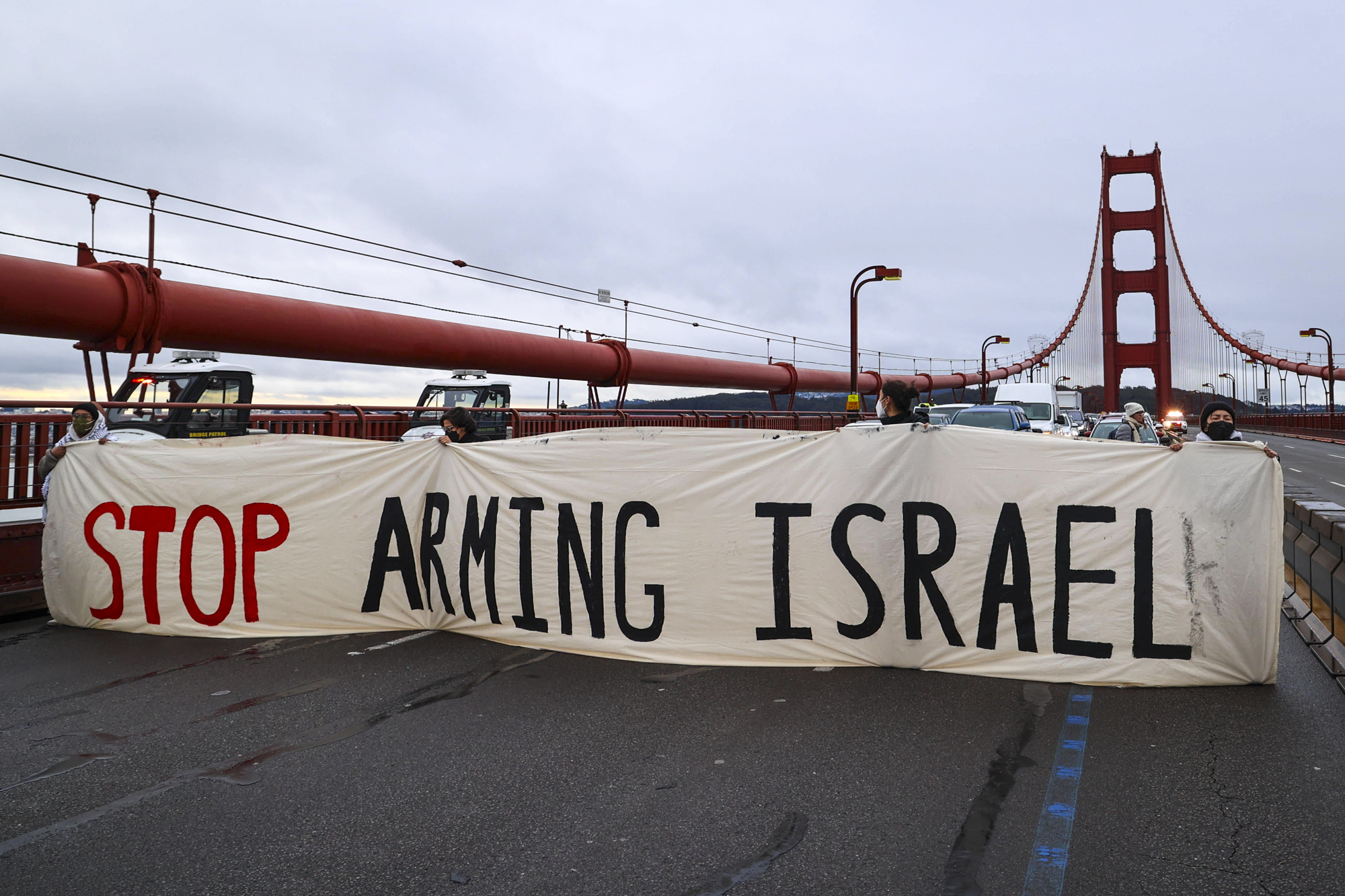
Many of these protests have focused specifically on the United States’ financial support of Israel, which is now over six months into its siege of Gaza. Israeli forces have killed over 34,000 Palestinians, according to Gaza’s Health Ministry. This is since Hamas’ attack on Oct. 7, which killed some 1,200 people, according to the Israeli government. (Follow KQED’s coverage of the war and its impact on the Bay Area community, and read more from NPR about the decades-long conflict in its Middle East crisis — explained series)
“Lawful protests are, by design, meant to be visible and inconvenient,” said ACLU Northern California’s legal director, Shilpi Agarwal, in response to Jenkins’ announcement of possible charges against the protesters who shut down the Golden Gate Bridge. “Lawful protests often create roadblocks or shut down streets or create traffic.”
Margaret Russell — an assistant law professor at Santa Clara University School — said she discussed the protests with undergraduate and graduate students.
“As the arrests and violence increase, people become fearful of what might happen to them even if they protest peacefully,” she wrote in an email to KQED. “Will they get caught up in an altercation and be arrested? Their determination to speak up is ‘chilled’ or silenced.”
If you choose to join a protest — about any issue you feel strongly about — what are your legal rights in California? How much does the First Amendment protect protesters, and what can protesters be arrested for? Keep reading for what to know about protesting and the law, and read our other guides to:
And remember: If you’re unable to join a rally or protest in person for whatever reason but want to make your stance on any issue known, you always have the option to contact your elected officials to express your opinions. For more information on what “call your reps” actually means, how to do it, and what to expect as a result, read our explainer: How Can I Call My Representative? A Step-by-Step Guide to the Process.
The First Amendment of the United States Constitution protects five basic rights: freedom of religion, freedom of speech, freedom of the press, peaceful assembly and petitioning the government. (The text in full reads: “Congress shall make no law respecting an establishment of religion, or prohibiting the free exercise thereof; or abridging the freedom of speech, or of the press; or the right of the people peaceably to assemble, and to petition the Government for a redress of grievances.”)
California also has its own expansive free speech provisions under Article 1, Section 2 of the state’s constitution that protect and reaffirm many of these rights.
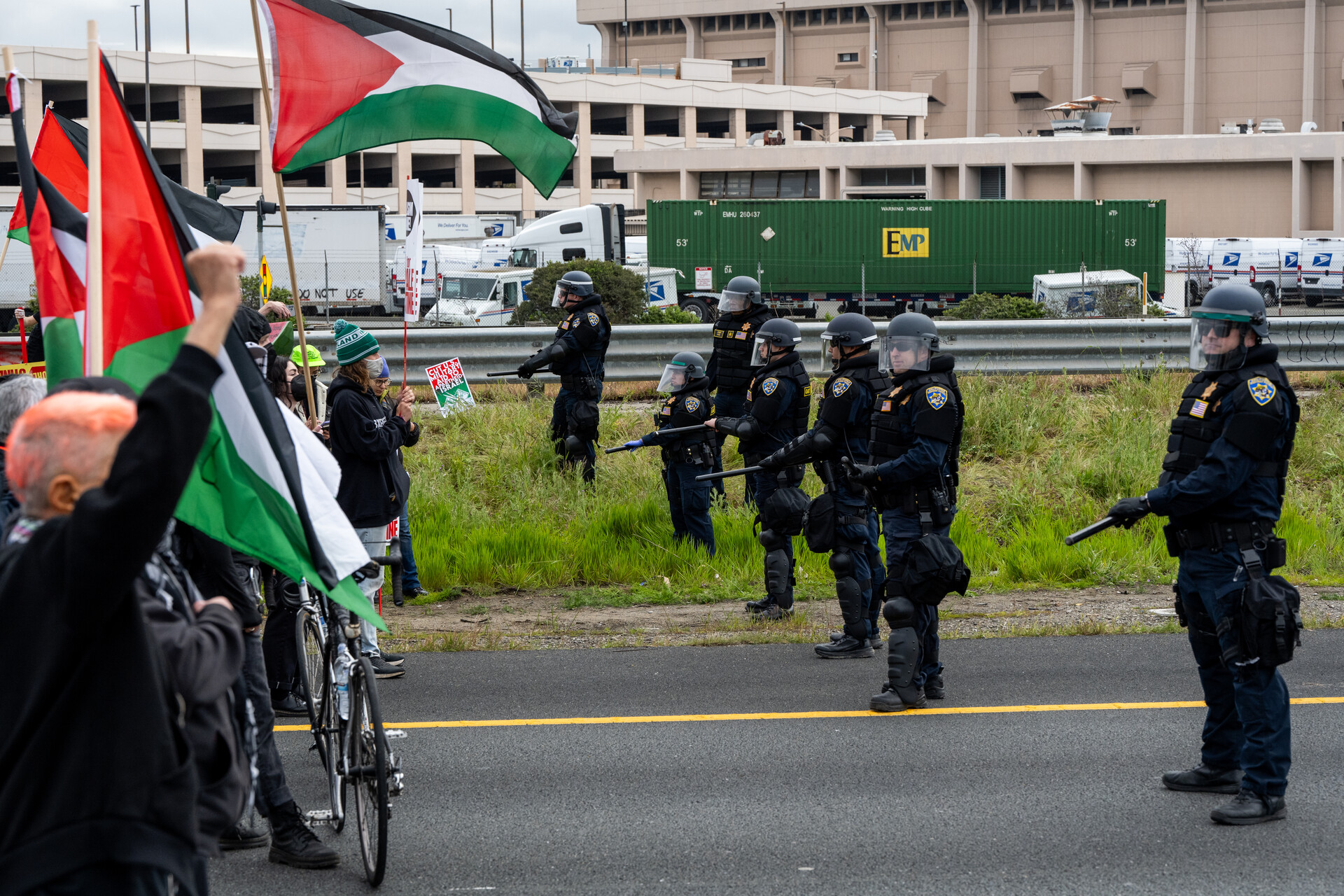
“These rights are all really powerful, and they protect our democracy,” said Chessie Thacher, senior attorney with ACLU NorCal’s Democracy and Civic Engagement Program. “But they’re not unlimited, and they depend on various factors.”
Some of those factors, Thacher said, include:
Thacher said there were some misconceptions about the First Amendment to keep in mind:
The First Amendment, Thacher said, dates back to a time when locations like marketplaces were considered to be “the centerpiece of a community” — “so public spaces like town squares, sidewalks and other highly visible, publicly-owned pieces of property that are open to the public are where you have the most rights to free speech.”
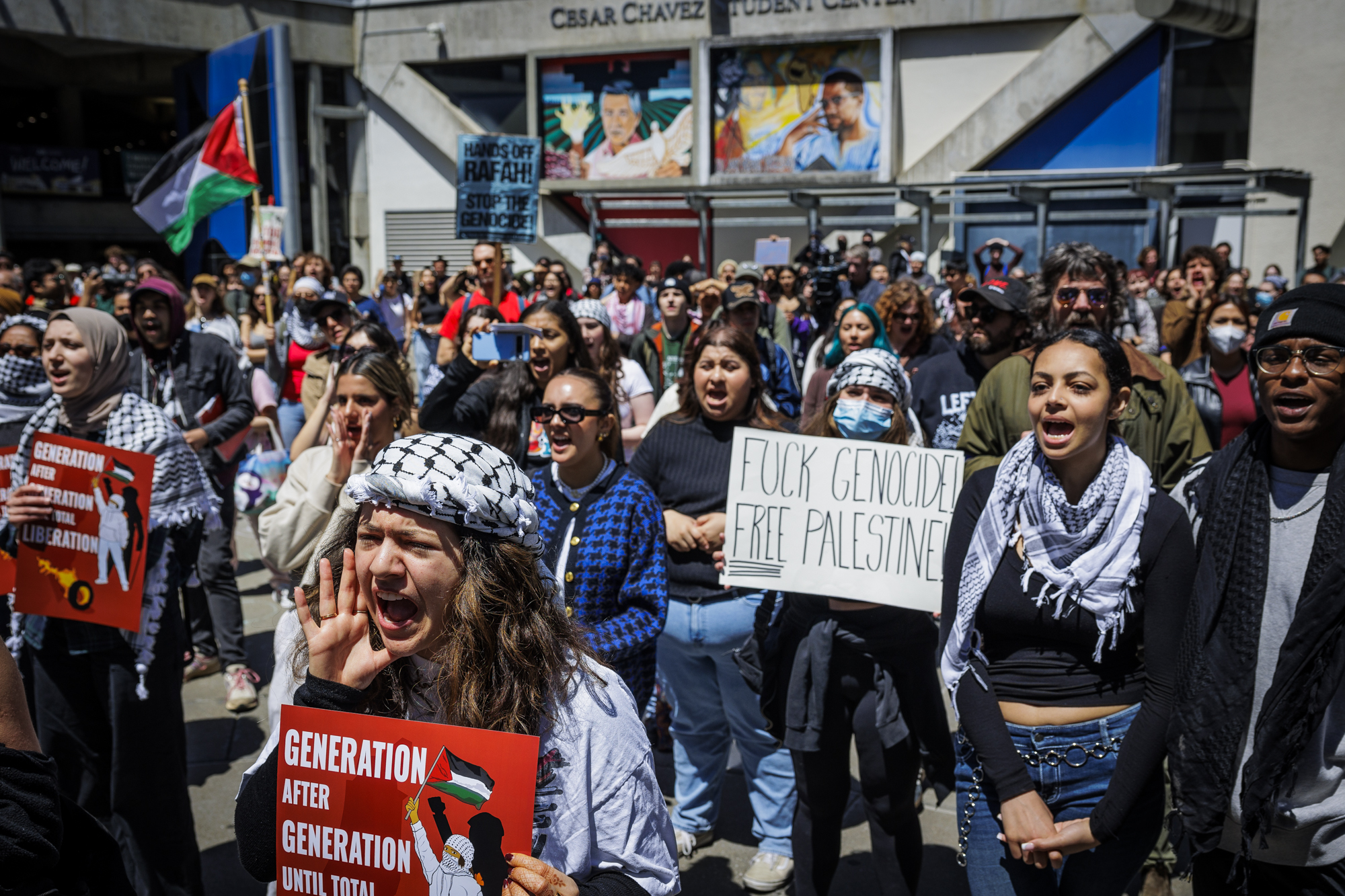
The only thing people’s rights can be subjected to in public spaces is the reasonable time, place and manner restrictions mentioned above. Those restrictions also must be “content-neutral,” meaning it cannot be specific to your speech, Thacher said.
However, she added that it is a “totally different equation” if you are at someone’s house — since you are there at the invitation of the property owner, not the government.
Places where the public is invited at certain times, such as a public library or a public school cafeteria, are in-between spaces sometimes called a “limited public forum,” and “any restrictions of speech there must be viewpoint-neutral and reasonable in light of the forum’s purpose,” Thacher said.
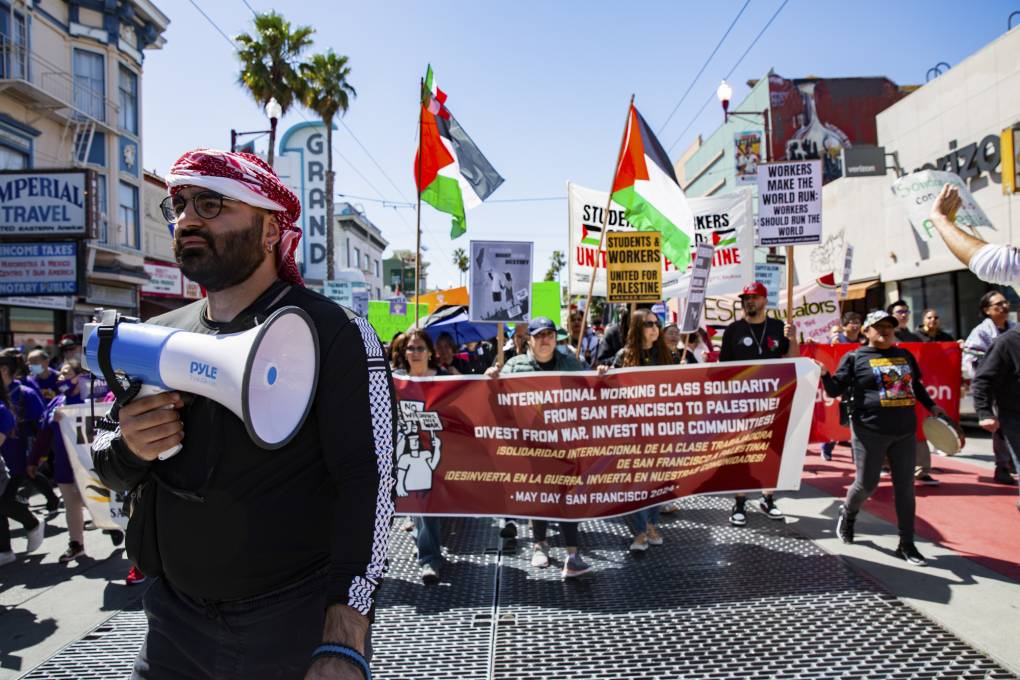
Dan Mogulof, assistant vice chancellor of public affairs at UC Berkeley told KQED Forum on Tuesday that the University of California had changed its policy on responding to “non-violent political protests” after the 2012 Occupy Wall Street movement in which an officer pepper-sprayed a group of UC Davis protesters. (UC Davis settled a federal lawsuit with the students, paying around $1 million to the affected protesters.)
“That policy requires us not to call in law enforcement preemptively, and only when there’s a clear, imminent threat to the campus, to life, safety and to the safety of the campus community,” Mogulof said.
Bridges and highways are considered open public spaces — and public forums — but they are subject to safety and traffic issues.
“There can be civil disobedience. That could be a way of advocating for a cause, but it’s not protected First Amendment right to do that because the public and the government can have a compelling interest in making sure that those roadways and spaces are open and safe,” Thacher said.
However, she noted that, in her opinion, “a lot of the times, the justification of public safety gets overused to punish protesters and speakers.”
“If you are looking to exercise your right to free speech lawfully and peacefully, you should not be arrested,” Thacher said. “But sometimes things happen.”
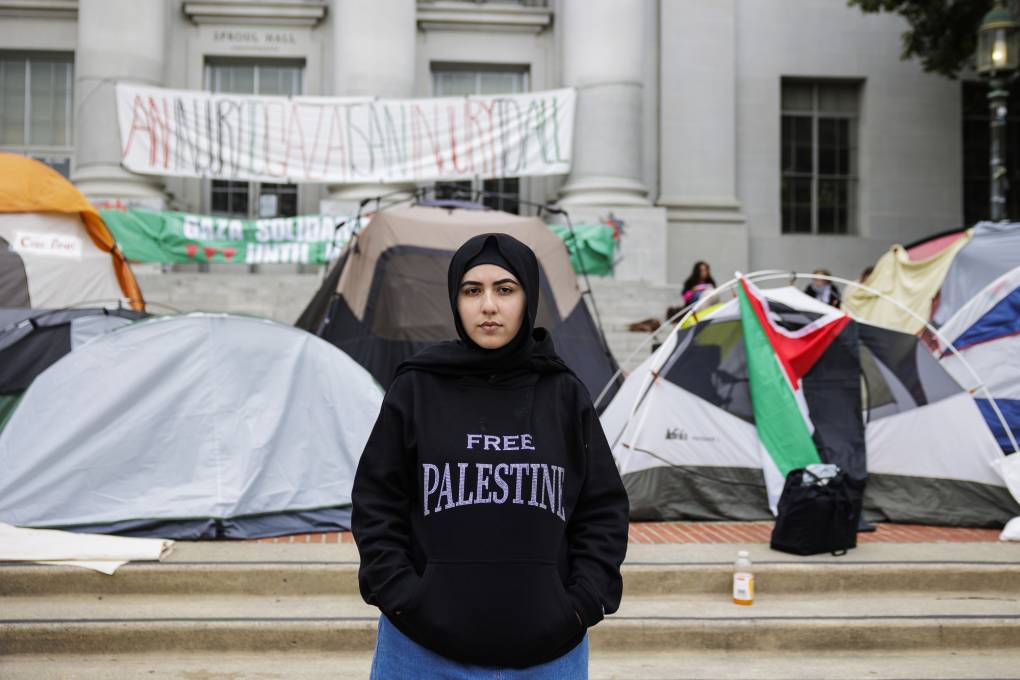
People at protests may be arrested under suspicion of any crime, but here are some of the most common reasons:
Thacher explained there is a scale from infraction, misdemeanor and felony:
What happens to a person after they’re arrested depends on the case, Thacher said. A person could be given a citation to appear at a later court date or be given a ticket for an infraction. They may need to sign the ticket, saying there is no need to take them into custody because they promised to appear in court. A person could also be taken into custody at the police department and booked into jail.
“If you are detained and the police say you’re not free to leave, you still don’t have to give a statement or submit or answer any questions,” said Rachel Lederman, an attorney with Partnership for Civil Justice Fund and with the Center for Protest Law and Litigation.
“If police are seeking to question you when you’re under arrest when you’re taken into the jail, you will have to answer some basic booking questions,” Lederman told KQED in 2023 after San Francisco police arrested over a hundred people — most of whom were minors — at an annual “hill bomb” event. “But you don’t have to answer questions about the incident that has led to your arrest.” She said people may not want to give statements or interviews until they consult an attorney (invoking your right to remain silent).
If a police officer asks for your ID during a protest:
In California, if you are not being arrested, you do not need to show your ID or give your name to a police officer when asked for it — “although sometimes it’s a judgment call about whether that might arouse suspicion,” Lederman said. Officers in California can’t also ask about your immigration status.
In California, “non-drivers cannot be lawfully arrested solely for refusing to provide identification to a police officer,” Thacher said. “But we do know of instances where police officers make the arrest anyway,” she warned.
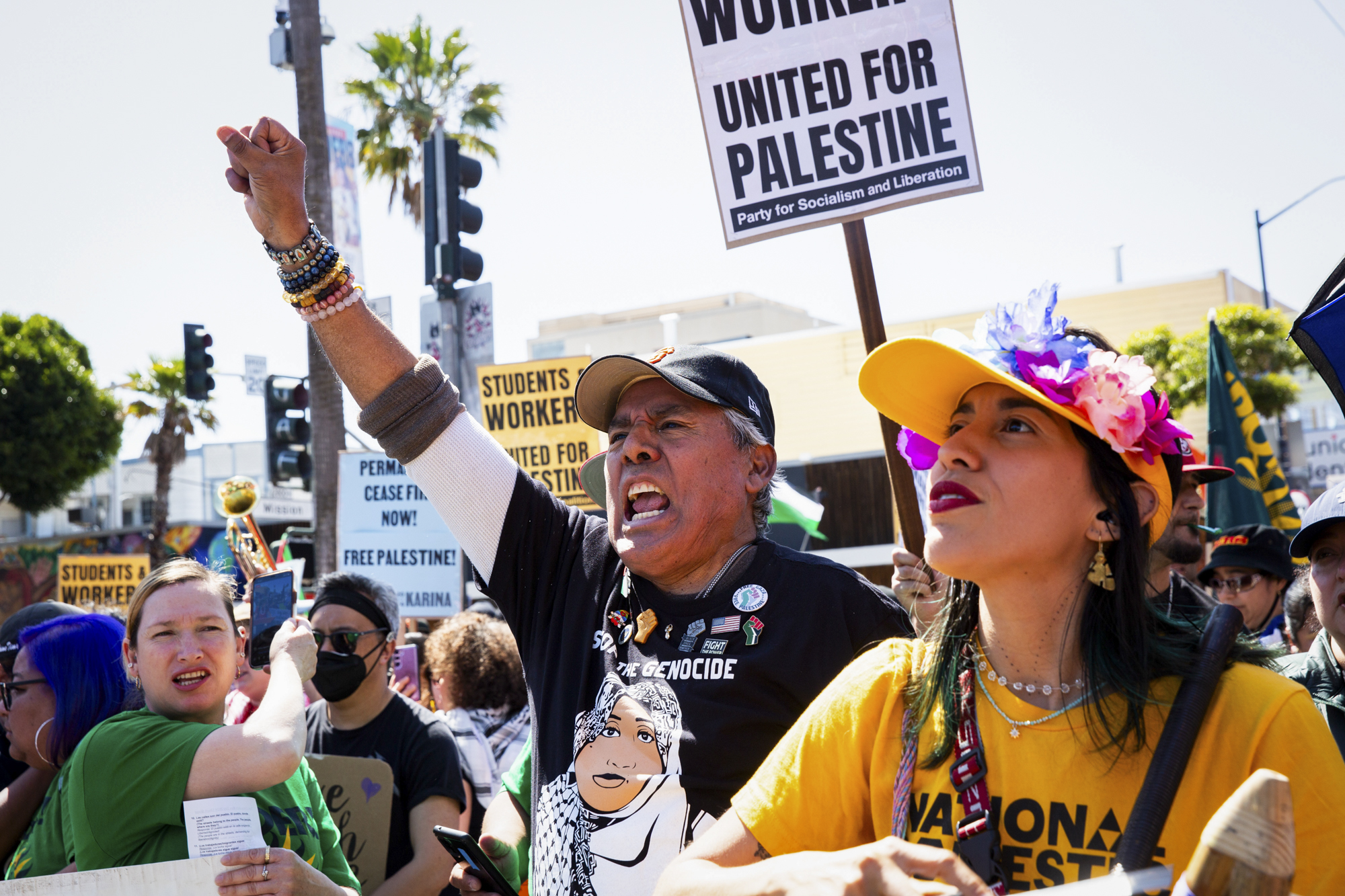
If a police officer asks you to move during a protest:
It depends, Thacher said. Some things people should note at the scene include: Why is the officer asking you to leave, and how are they asking you to leave? Do people have the ability to comply with the order, and can you do it reasonably without being put at risk of getting hurt? Are they asking you to move, and you don’t have time to move because it is such a packed crowd?
“The officers have the right to ask you to move in certain circumstances, like for public safety … [or] if there’s traffic violations starting to happen,” she said. But “the police can’t ask you to leave and then immediately turn around and arrest you.”
Thacher said people should take note and record details about encounters with officers, especially when people believe their rights may be violated, such as an officer calling people to disperse in a tightly packed crowd. Some things a person should make note of include:
“All of that stuff can be important when you’re trying to go back and understand what happened to you,” she said.
If someone thinks their rights have been violated, they can take their notes and footage to a legal expert to understand the situation more.
Russell, the Santa Clara University School assistant professor, said that if you are a student on a public or private college campus, file a grievance with the school’s relevant office and provide specific details of what happened. Russel said people should also contact their local ACLU’s advice line to provide details. If one can afford legal counsel, groups like the National Lawyers Guild can assist protesters.
“Think about what your goal is as a protester, and protect yourself accordingly,” she wrote in an email, adding that reputable groups to learn about your rights include one’s local ACLU, Amnesty International and the NAACP. “Educate yourself about civil disobedience and protest rights.”
Civil disobedience is “the refusal to comply with lawful orders as a form of protest,” Thacher said. For example, when an officer calls for dispersal and people do not move, that is when it goes from protected speech to an act of civil disobedience. It is also non-violent by its nature.
One of the most well-known examples of civil disobedience is the 1950s demonstrations by Martin Luther King Jr. during the civil rights movement, which frequently involved blocking roads and highways.

“People can choose to practice civil disobedience as a peaceful form of political protest,” Thacher said. “They can mix that with other activities that are protected by the First Amendment, such as lawful assemblies.”
Seth Morrison from the Bay Area chapter of Jewish Voice for Peace told KQED in 2023 that he would advise would-be protesters contemplating civil disobedience to “consider it carefully and think about the pros and cons … But if you and a good group of people are deeply committed to an issue — if you’ve done your research and if you have tried through normal channels and not gotten a response — civil disobedience is something you should think about.”
Thacher said that while the First Amendment may not protect activities like blocking a bridge as the goal of the protest, this kind of action could be an effective act of civil disobedience nonetheless.
“A lot of times protests and civil disobedience can be put under the same umbrella of ‘civil unrest,’ and then everyone thinks it’s all the same thing,” she said. “But protest and exercising your right to demonstrate and peacefully assemble is protected.”
KQED’s Alexis Madrigal contributed to this story.